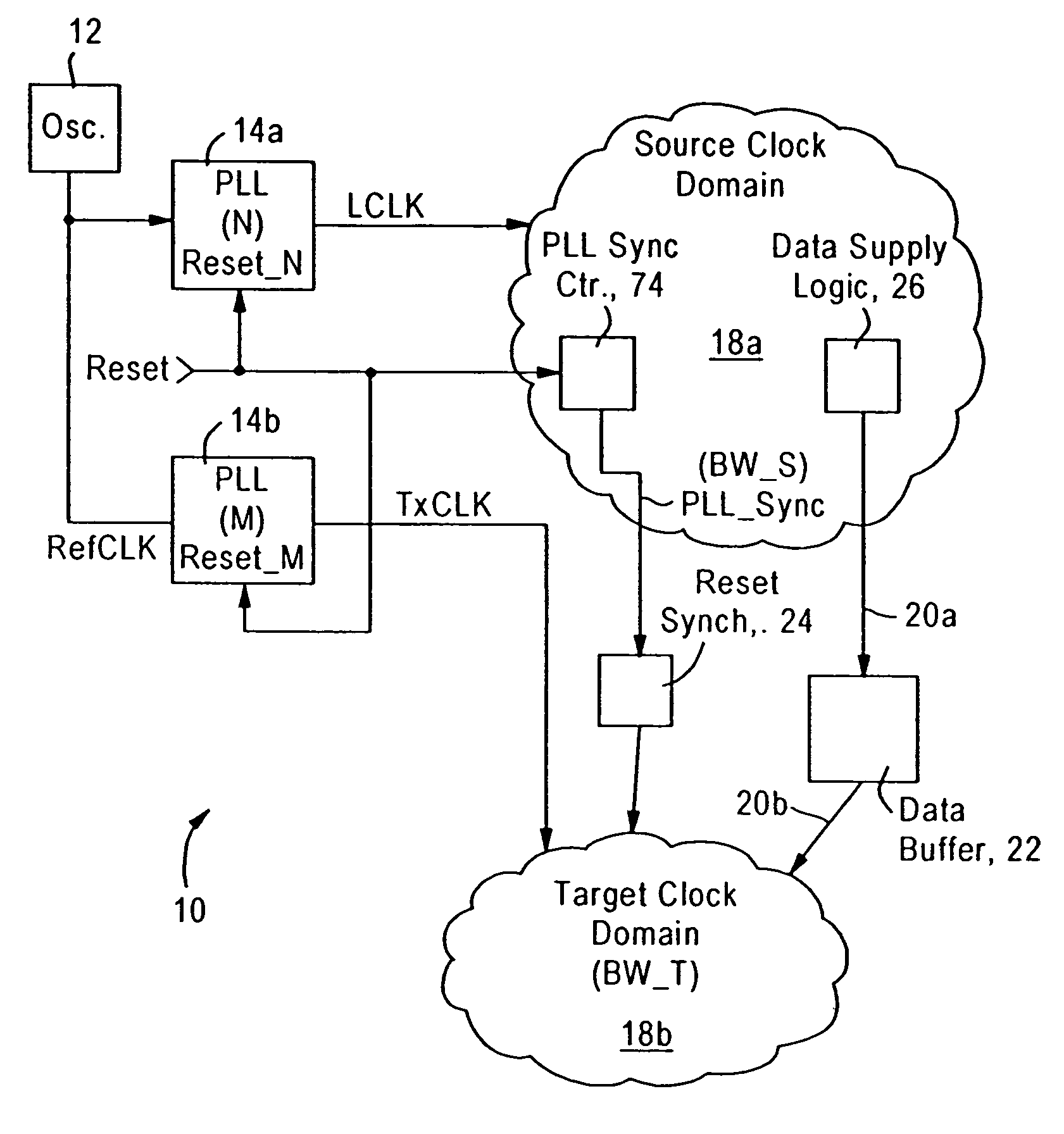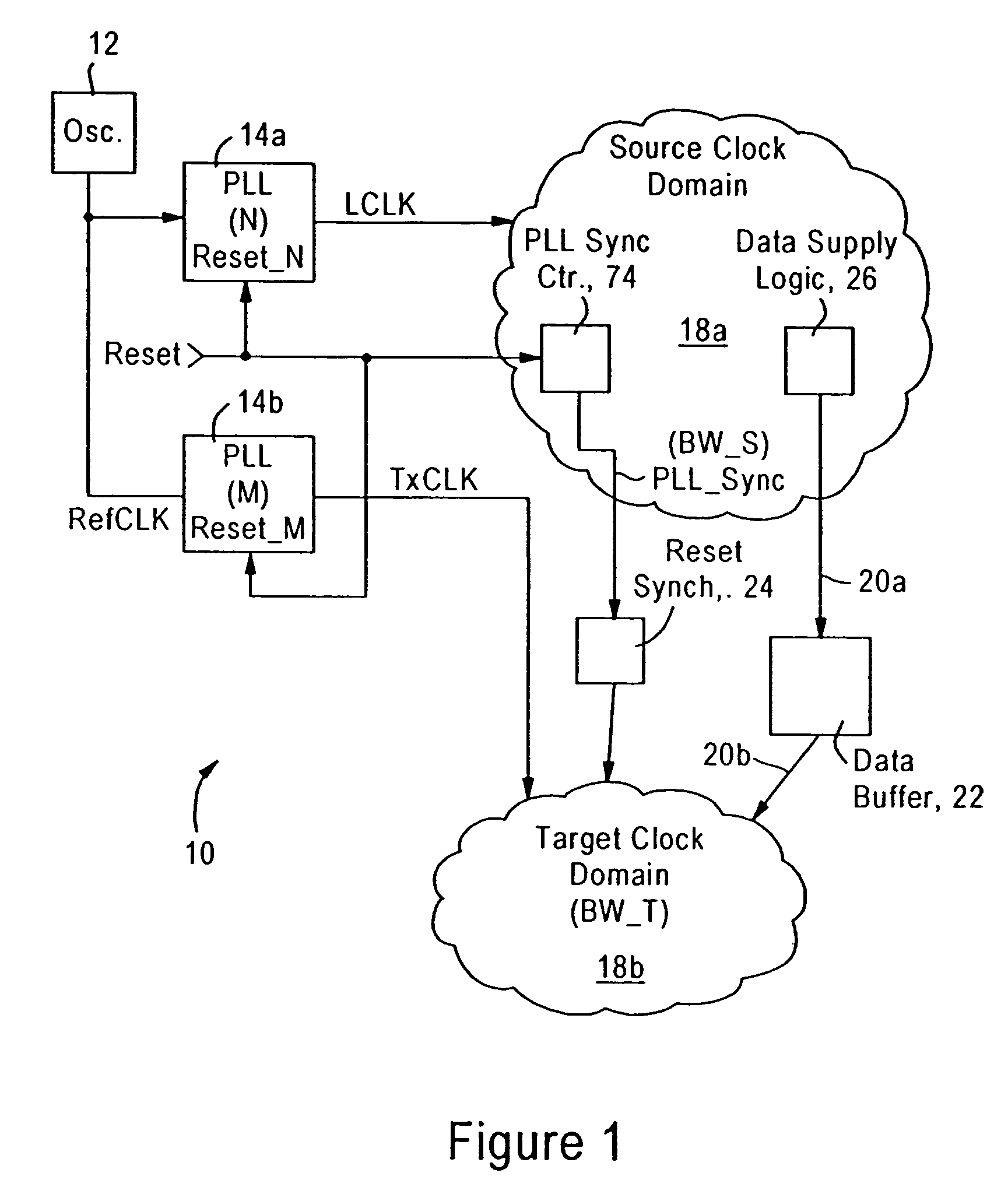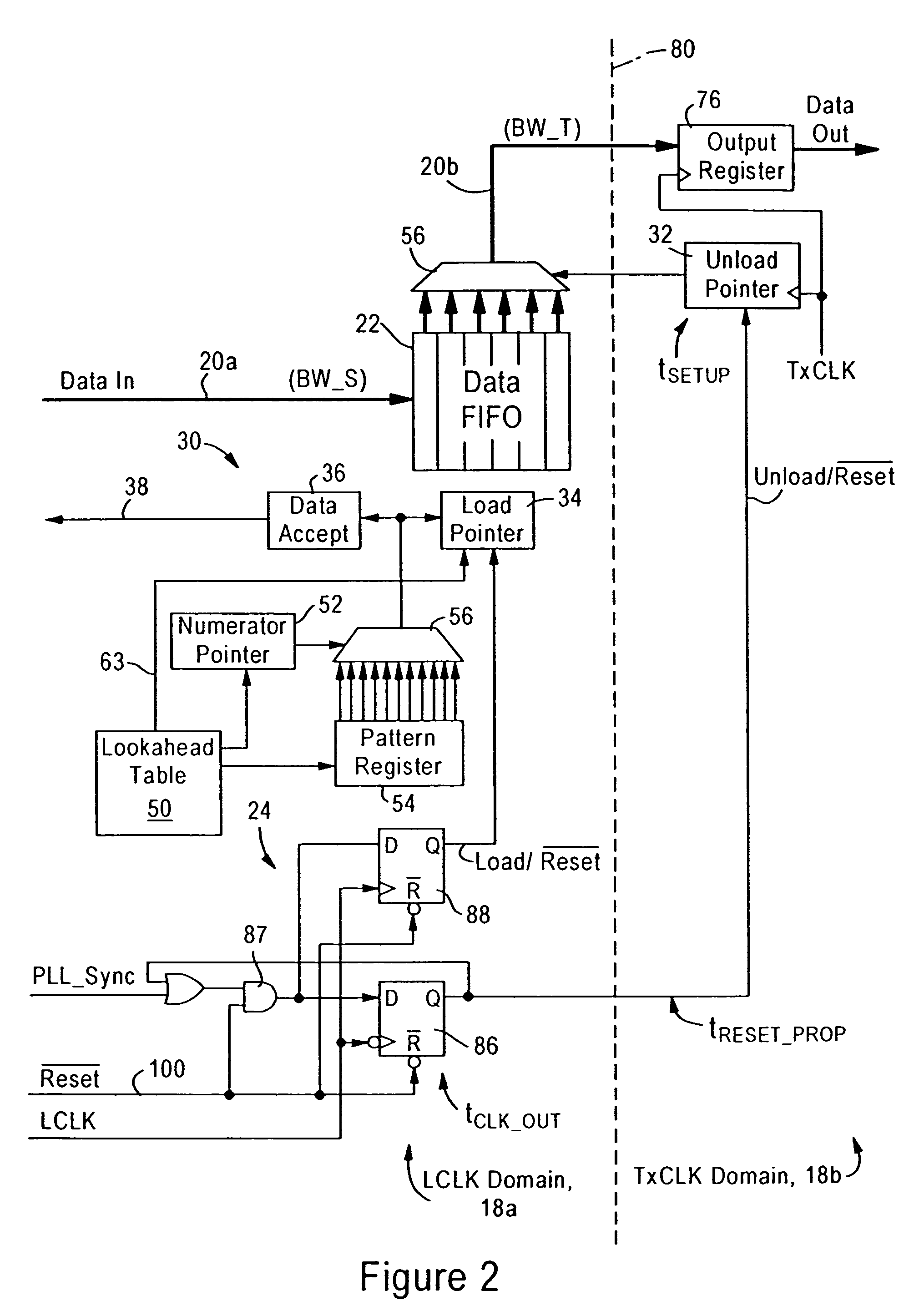Low-latency synchronous-mode sync buffer circuitry having programmable margin
- Summary
- Abstract
- Description
- Claims
- Application Information
AI Technical Summary
Benefits of technology
Problems solved by technology
Method used
Image
Examples
Embodiment Construction
[0021]The disclosed embodiment is directed to an integrated circuit, for example a microprocessor or a device that interfaces with the microprocessor via a high-speed link such as a HyperTransport™ link, having a transmit buffer circuit configured for outputting synchronous data signals based on synchronization between a local clock generated according to a local clock domain, and a transmit clock identifying a transmit clock domain, the local clock and the transmit clock generated based on the same reference frequency. As described below, however, the local clock and the transmit clock can have a relationship of an integer ratio of frequencies, with some jitter.
[0022]FIG. 1 is a diagram illustrating a synchronous transmission system 10 including an oscillator12 configured for generating a reference clock signal (RefCLK), phase locked loops (PLLs) 14a, 14b configured for generating a local clock (LCLK) (i.e., a source clock) and a transmit clock (TxCLK) (i.e., a target clock) at res...
PUM
 Login to View More
Login to View More Abstract
Description
Claims
Application Information
 Login to View More
Login to View More - R&D
- Intellectual Property
- Life Sciences
- Materials
- Tech Scout
- Unparalleled Data Quality
- Higher Quality Content
- 60% Fewer Hallucinations
Browse by: Latest US Patents, China's latest patents, Technical Efficacy Thesaurus, Application Domain, Technology Topic, Popular Technical Reports.
© 2025 PatSnap. All rights reserved.Legal|Privacy policy|Modern Slavery Act Transparency Statement|Sitemap|About US| Contact US: help@patsnap.com



